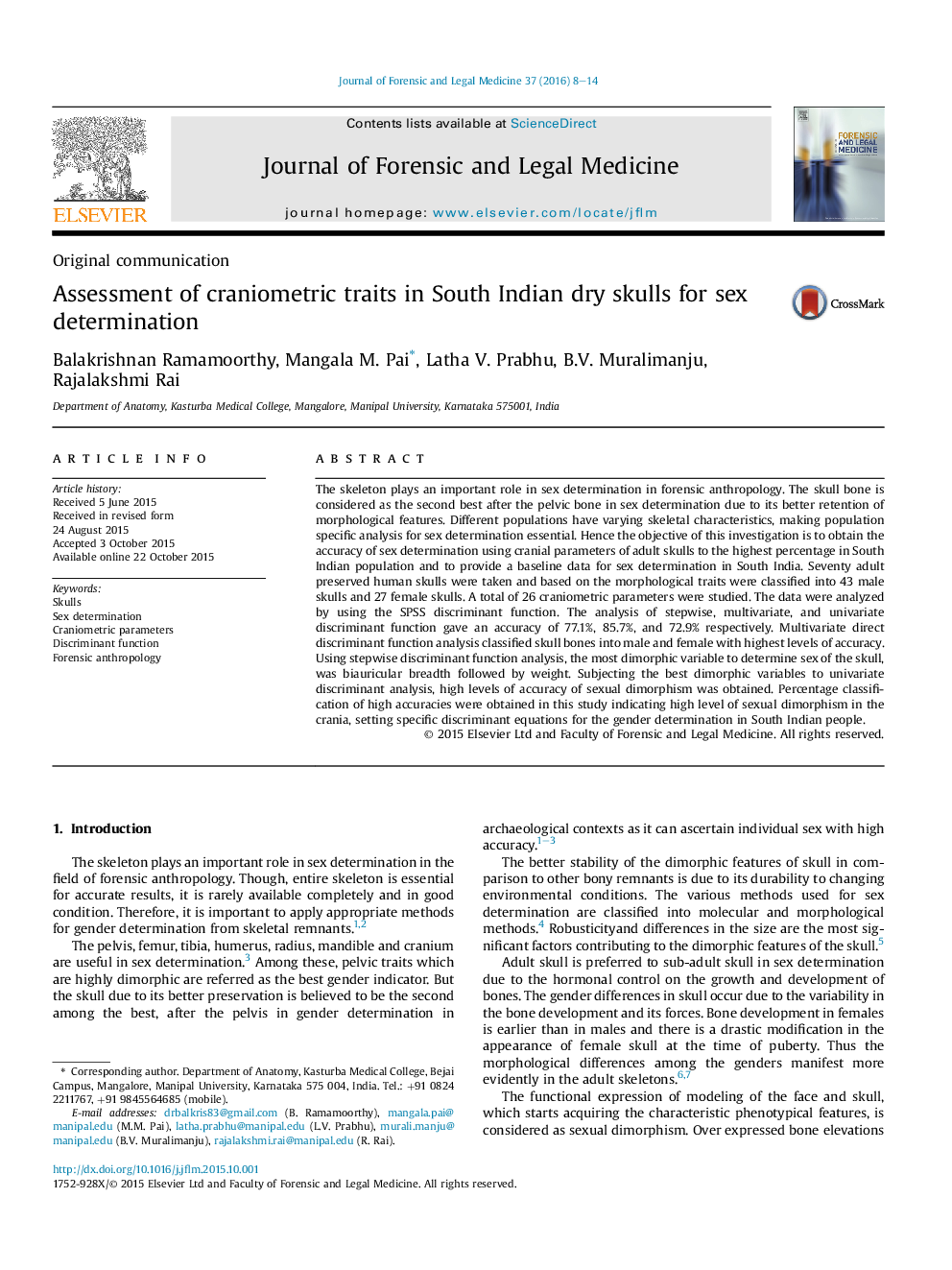| کد مقاله | کد نشریه | سال انتشار | مقاله انگلیسی | نسخه تمام متن |
|---|---|---|---|---|
| 101701 | 161289 | 2016 | 7 صفحه PDF | دانلود رایگان |
• 26 parameters were measured from 70 preserved adult human skulls of south Indian population.
• Craniometric parameters were subjected to discriminant function analysis.
• Multivariate discriminant analysis gave the highest classification accuracy (85.7%).
• The best dimorphic variables were biauricular breadth followed by weight.
• The classification accuracy of female skulls was higher than male skulls.
The skeleton plays an important role in sex determination in forensic anthropology. The skull bone is considered as the second best after the pelvic bone in sex determination due to its better retention of morphological features. Different populations have varying skeletal characteristics, making population specific analysis for sex determination essential. Hence the objective of this investigation is to obtain the accuracy of sex determination using cranial parameters of adult skulls to the highest percentage in South Indian population and to provide a baseline data for sex determination in South India. Seventy adult preserved human skulls were taken and based on the morphological traits were classified into 43 male skulls and 27 female skulls. A total of 26 craniometric parameters were studied. The data were analyzed by using the SPSS discriminant function. The analysis of stepwise, multivariate, and univariate discriminant function gave an accuracy of 77.1%, 85.7%, and 72.9% respectively. Multivariate direct discriminant function analysis classified skull bones into male and female with highest levels of accuracy. Using stepwise discriminant function analysis, the most dimorphic variable to determine sex of the skull, was biauricular breadth followed by weight. Subjecting the best dimorphic variables to univariate discriminant analysis, high levels of accuracy of sexual dimorphism was obtained. Percentage classification of high accuracies were obtained in this study indicating high level of sexual dimorphism in the crania, setting specific discriminant equations for the gender determination in South Indian people.
Journal: Journal of Forensic and Legal Medicine - Volume 37, January 2016, Pages 8–14
